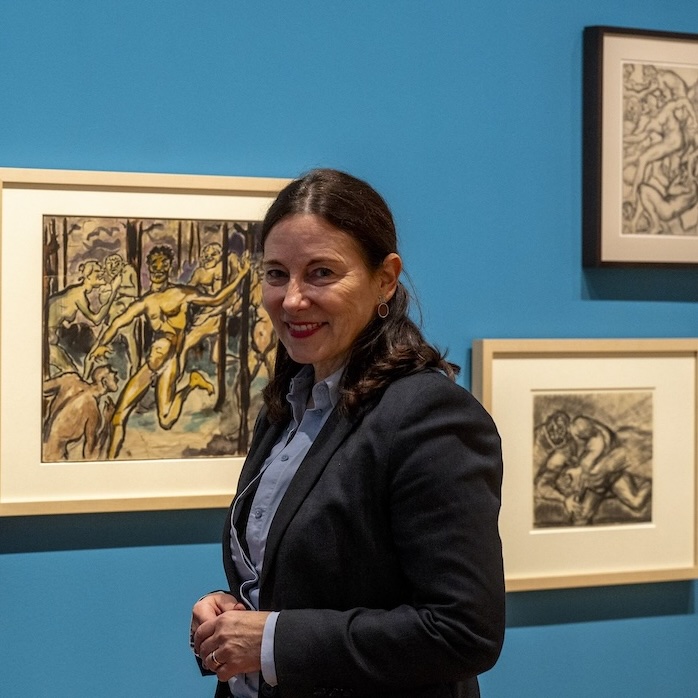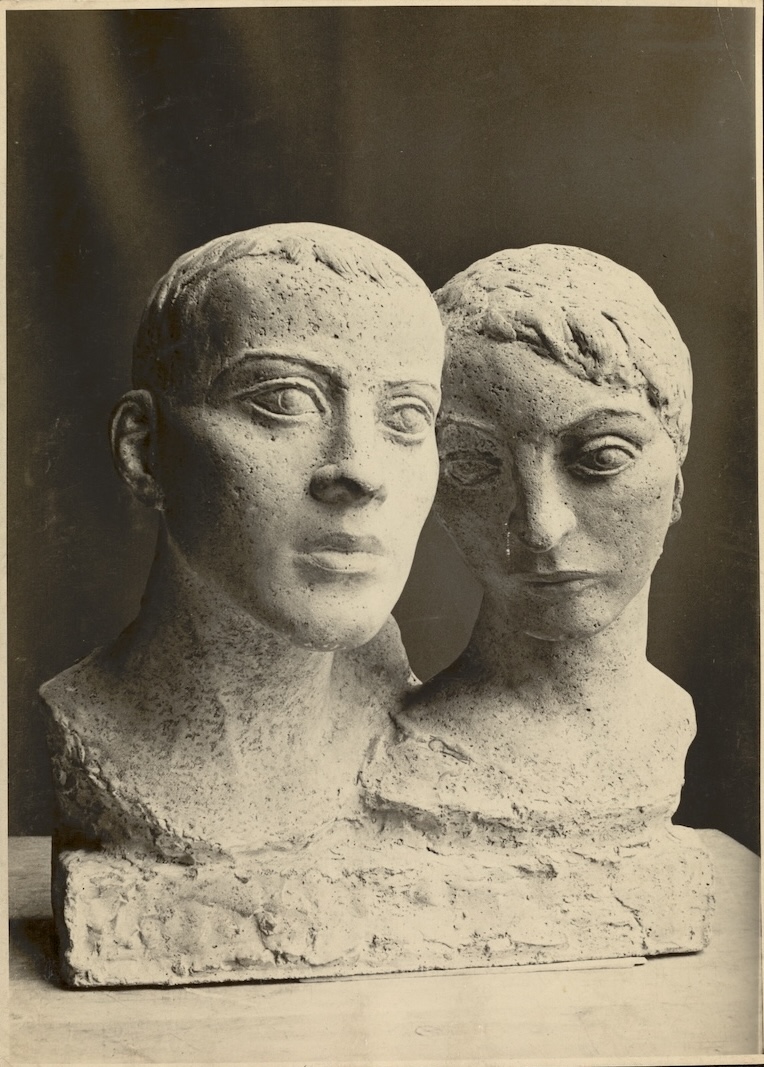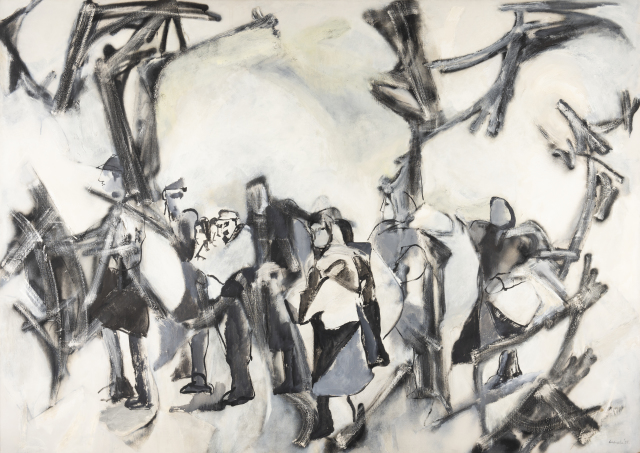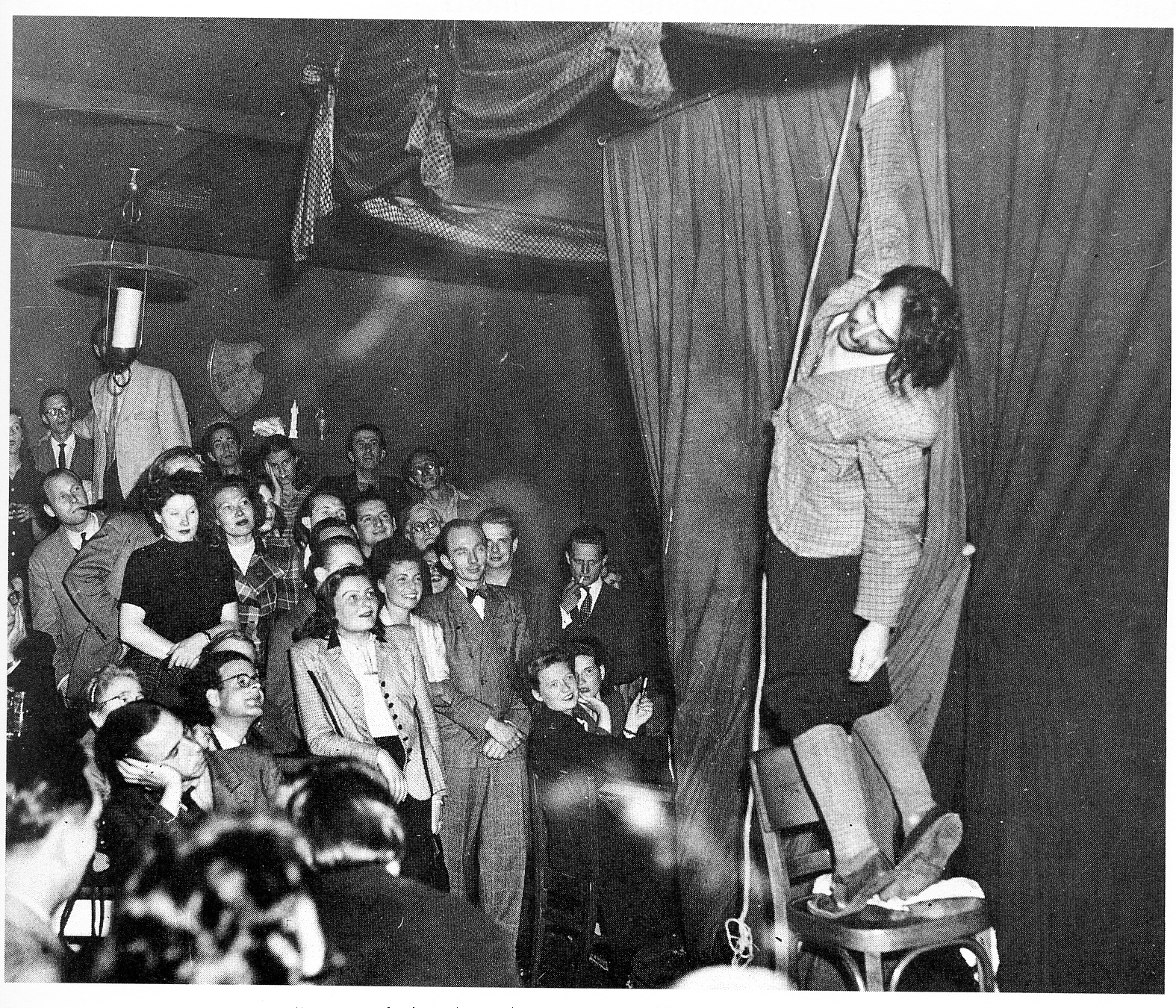art

Gertrud Kauders, Jewish Artist from Prague (1883-1942):
Surprises, Enigmas, Opportunities
Presentation by Simon During, Brisbane (Australia)
ONLINE
VA, United States
While workmen were demolishing a house on Prague’s outskirts in July 2018 they were astonished to be deluged by works of art falling from a ceiling. Nobody knew the works had been hidden there. The art turned out to be that of Gertrud Kauders who had hidden them in the house of a friend before being deported to Theresienstadt and then to Majdanek where she was murdered on arrival in May 1942. Kauders was a serious and inventive artist, quite well known in Prague’s art world of the time. She worked in oils, pencil, crayon, watercolour and gouache. Now her work is held by museums around the world. Image above: Gertrud Kauders © Kauders Family Estate [...]

Love, Betrayal and Ascher’s Unpainted Pictures
Tour by Exhibition Curator Jutta Götzmann
Haus der Graphischen Sammlung, Freiburg (Germany)
Haus der Graphischen Sammlung
Salzstraße 34, Freiburg im Breisgau, Germany
Jutta Götzmann, exhibition curator of "Love and Betrayal," presents the artist Fritz Ascher (1893-1970) during a tour. In addition to early charcoal, graphite and ink drawings, colorful gouaches are fascinating. Poems that are considered his "unpainted pictures" and were created in secret during the National Socialist era complement the exhibition. BUY TICKETS HERE The Fritz Ascher Society is a not-for-profit 501(c)3 organization. Your donation is fully tax deductible. YOUR SUPPORT MAKES OUR WORK POSSIBLE. THANK YOU. DONATE HERE

Fred Kormis – Sculpting the Twentieth Century
Presentation by Barbara Warnock, London (England)
ONLINE
VA, United States
Born in 1894 in Frankfurt into an Austrian and German Jewish family, Fred Kormis’ life and career were shaped and disrupted by some of the most significant events of the twentieth century. Kormis saw action and was wounded in the First World War as part of the Austrian army, before being held for four years as a prisoner of war in Siberia. Image above: Fred Kormis, Two Heads, c. 1930s © Wiener Holocaust Library Collections He worked as an artist during the politically and culturally tumultuous Weimar period, and during the Nazi era revealed himself to be Jewish, a decision that led to the removal of his art from galleries. Kormis and his wife Rachel Sender [...]

SURVIVAL AND INTIMATIONS OF IMMORTALITY:
The Arts of Alice Lok Cahana, Rabbi Ronnie Cahana and Kitra Cahana
Oregon Jewish Museum and Center for Holocaust Education, Portland, Oregon
Oregon Jewish Museum and Center for Holocaust Education
724 NW Davis St, Portland, OR, United States
Survival and Intimations of Immortality: The Art of Alice Lok Cahana, Rabbi Ronnie Cahana, and Kitra Cahana is a unique and powerful exhibition that explores the role of art and creativity, bringing the past into the present by focusing on three generations of artists from the same family. Alice Lok Cahana (1929-2017) was a Holocaust survivor who pledged she would become an artist if she survived the war. Rabbi Ronnie Cahana, Alice’s oldest son, is a poet and survivor of a major stroke. Kitra Cahana, Ronnie’s daughter, is a filmmaker and photographer. This exhibition reveals how the tragedy of the Holocaust impacted multiple generations of a family and how each member transformed the destructive trauma of the Shoah into [...]

Opening reception
SURVIVAL AND INTIMATIONS OF IMMORTALITY:
The Arts of Alice Lok Cahana, Rabbi Ronnie Cahana and Kitra Cahana
Oregon Jewish Museum and Center for Holocaust Education, Portland, Oregon
Oregon Jewish Museum and Center for Holocaust Education
724 NW Davis St, Portland, OR, United States
Please join us for the opening event! Survival and Intimations of Immortality: The Art of Alice Lok Cahana, Rabbi Ronnie Cahana, and Kitra Cahana is a unique and powerful exhibition that explores the role of art and creativity, bringing the past into the present by focusing on three generations of artists from the same family. Alice Lok Cahana (1929-2017) was a Holocaust survivor who pledged she would become an artist if she survived the war. Rabbi Ronnie Cahana, Alice’s oldest son, is a poet and survivor of a major stroke. Kitra Cahana, Ronnie’s daughter, is a filmmaker and photographer. This exhibition reveals how the tragedy of the Holocaust impacted multiple generations of a family and how each member transformed [...]

Plunderer. The Life and Time of a Nazi Art Thief
Screening followed by Q+A with producer John Friedman
Marlene Meyerson JCC Manhattan, New York
Marlene Meyerson JCC Manhattan
334 Amsterdam Ave, New York, NY, United States
Hermann Goering’s art dealer, Bruno Lohse, prospered by selling stolen art for decades after WWII, while Jewish families struggled to regain their paintings and memories. Captured and interrogated by the Monuments Men after the war, he served a brief prison sentence. After his release, he dealt profitably in stolen art for sixty years after the war, selling to collectors, galleries, and major museums. Highlighting stories of Holocaust survivors working to reclaim their families' lost artworks, Plunderer reveals the failures of post-war justice and the continuing complicity of governments and the art trade. Screening followed by Q+A with producer John Friedman. In partnership with The Fritz Ascher Society for Persecuted, Ostracized and Banned Art. Director: Hugo Macgregor Year: 2024 Runtime: [...]

Art and Conscience in a Time of Upheaval.
Ben Shahn (1898-1969)
Presentation by Ori Z Soltes, Washington (DC)
ONLINE
VA, United States
Georgetown University professor Ori Z Soltes will speak about Ben Shahn (1898-1969), who arrived in 1906 as a child to the United States from Tsarist-governed Lithuania. Four years after the Tsarist authorities had exiled his father to Siberia for alleged revolutionary activities, his mother managed to bring the family to New York. There they reconnected with Ben's father who had escaped from Siberia and made it to the US by way of South Africa. Image above: Ben Shahn, Detail of the Mural "The Meaning of Social Security," Wilbur J. Cohen Federal Building, Washington, D.C. Within 25 years Shahn emerged as perhaps the key figure in the developing arena of American Social [...]

Confronting the Holocaust in Midcentury American Art
Presentation by Jennifer McComas, Bloomington (Indiana)
ONLINE
VA, United States
The Holocaust’s profound impact on midcentury American art has been underrecognized and understudied. Jennifer McComas, curator of the current exhibition Remembrance and Renewal: American Artists and the Holocaust, 1940-1970 at Indiana University’s Eskenazi Museum of Art and primary author of the accompanying catalogue, explores the ways that American artists—American-born, immigrants, refugees from Nazi-occupied Europe, and Holocaust survivors—confronted the Holocaust in their work during the war and in the decades just after. Image above: Anna Walinska (American, born England, 1906-1997), Survivors – Exodus, 1958. Oil on canvas, 60 x 84 in. (152.4 x 213.4 cm). Gift of Rosina Rubin, Eskenazi Museum of Art, Indiana University, 2023.29. © Atelier Anna Walinska. Photo: Shanti Knight. [...]

From Vienna to Movies:
Costume Designer Ruth Morley at 100, a birthday commemoration.
Presentation by Melissa Hacker and Susan Gammie
ONLINE
VA, United States
In this virtual event, the life and work of Costume Designer Ruth Morley will be discussed by her daughter Melissa Hacker and Susan Gammie, her assistant, protégé and close friend. Ruth Morley (1925-1991) fled her childhood home in Vienna on a Kindertransport as an unaccompanied child refugee, arrived in New York City as a teenager, and became a noted costume designer whose career spanned decades and disciplines, including dance, opera, theater, film and television. Her film credits include American classics Tootsie, Annie Hall, Taxi Driver, The Chosen, Kramer vs Kramer and The Hustler; her theater, opera and dance credits include Death of Salesman (with Dustin Hoffman), The Threepenny Opera, Deathtrap, Miracle Worker (stage and film, for the film, she received an Oscar nomination), Billy Budd, the Golem, and many more. Television includes Playing for Time with Vanessa Redgrave and Mussolini with George C [...]

Resistance and Art:
The “Red Orchestra” Anti-Nazi Group in Berlin
Presentation by Stefan Roloff, Berlin (Germany)
School of Visual Arts, 133/141 West 21st Street, Room 101C, New York, NY
School of Visual Arts
133 West 21st Street, New York, United States
BFA Visual and Critical Studies, the SVA Honors Program and the Fritz Ascher Society for Persecuted, Ostracized and Banned Art host a lecture by painter and filmmaker Stefan Roloff, exploring the visual art and resistance of three members of the "Red Orchestra" underground anti-Nazi group. Finger food served; RSVP required. The so-called “Red Orchestra” fought against the Third Reich within Germany from 1933 to 1942. The Gestapo labeled them as Communists and traitors, a theory that was upheld by Allied Secret Services until recently. Historians now officially recognize their work as that of the largest and most diverse civil anti-Nazi resistance group. The participants held a variety of political and religious beliefs while representing the gamut of German society. [...]


